April 8, 2025
5 Real-life Data Transformation Examples
Did you know that businesses today need massive amounts of data to run smoothly and keep their customers/clients satisfied?
They need datasets from customer interactions, IoT devices, and digital platforms. After generating or sourcing raw data, the next critical step is ‘data transformation,’ which structures and processes the data for better usability.
By transforming the raw data into structured, consistent formats, these businesses can digest these critical insights for business intelligence, analytics, and automation. The transformed data can optimize marketing campaigns, streamline healthcare operations, and enable real-time decision-making and operational efficiency.
Key takeaways:
- An in-depth definition and methodologies of data transformation.
- Exploration of the latest tools and techniques driving data transformation.
- Real-world applications of data transformation across industries.
- Highlighting the role of AI and Machine Learning in Data Transformation.
- Compared approaches of data transformation for different business needs.
- Discussion of compliance, security, and governance in data transformation.
What Is Data Transformation?
Data transformation refers to the process of converting raw data from one format, structure, or value into another to make it more useful, compatible, or analyzable. It can align perfectly with several key areas, including business operations efficiency, artificial intelligence (AI), data analytics, compliance, and decision-making.
Methodologies of Data Transformation

When it comes to data transformation, businesses have two primary methodologies to choose from:
- ETL (Extract, Transform, Load).
- ELT (Extract, Load, Transform).
To understand the major difference, let’s look at this instance: Consider a retail company that wants to analyze customer purchasing behavior. To proceed, they would need to process and streamline vast amounts of data from various sources, including sales transactions, customer feedback, and social media interactions.
In this scenario, the retail company can use either ETL or ELT to transform its data (after sourcing or generating it) into a usable format.
If they choose ETL to transform the data, they would first need to extract the data from various sources, then transform it into a standardized format, and finally load it into their data warehouse. This approach involves cleaning and preparing the data before storing it in the data warehouse. This is a traditional method that works well for structured data and predefined schemas.
On the other hand, if they choose ELT, they would first extract the data from various sources, then load it into their data warehouse, and finally transform it into a usable format. This is a more modern method that’s better suited for cloud-based data warehouses, big data processing, and handling semi-structured and unstructured data.
While ETL is suitable for traditional data warehouses and structured data, ELT, on the other hand, offers faster performance, scalability, and flexibility for handling large volumes of data from various sources.
So, what will be your choice between ETL and ELT? (after considering your organization’s specific needs, data complexity, and analytics goals)
Up next, let’s talk about the latest tools and techniques for data transformation that are crucial in today’s data-driven world.
Best Strategies for Data Transformation

- Data Profiling: Data profiling analyzes data characteristics, including types, volumes, value ranges, relationships, irregularities, and duplicates. Conduct Thorough Data Profiling, that is to analyze your data thoroughly to identify its characteristics and determine the (entire) transformation needs.
- Data Standardization: This involves using consistent or uniform names and data formats across all sources to ensure your data’s accuracy, reduce the complexity of your data, simplify your data’s management, and improve the compatibility between systems. Develop processes to Handle Missing or Malformed Data. By establishing this process, you can effectively handle your incomplete data (if applicable).
- Data Validation: This involves checking your data for errors, inconsistencies, and inaccuracies to maintain data accuracy and quality. By using these latest tools, techniques, and following these strategies, businesses can fully and efficiently transform their data and drive business growth.
The Latest Data Transformation Tools
Here we will be talking about the latest specialized software tools (solutions) that can be used to automate, streamline, and optimize your data transformation process.
- Cloud-Based Data Integration Platforms: This includes platforms like AWS Glue, Google Cloud Data Fusion, and Azure Data Factory. These platforms help you easily combine, organize, and transform your data in a flexible and scalable way.
- Big Data Processing Engines: This includes engines like Apache Spark, Apache Flink, and Google Cloud Dataflow, which enable fast and scalable processing of your data.
- Data Governance and Security Tools: This includes tools like Apache Atlas, AWS Lake Formation, and Azure Purview, which help provide data governance, security, and compliance capabilities.
- Artificial Intelligence (AI) and Machine Learning (ML) Tools: This includes tools like Google Cloud AI Platform, Amazon SageMaker, and Azure Machine Learning, which enable automation of data processing, data insights, and analytics.
5 Real-Life Data Transformation Examples
Data transformation plays a crucial role in the decision-making and improved efficiency of companies’ business intelligence and customer satisfaction
Here are some real-life examples of data transformation in action for varied industries:
1. Healthcare Industries
In the healthcare industry today, patient records come from multiple source, such as electronic health records (EHRs), wearable devices, medical imaging, and clinical trial databases.
However, this raw data often comes and is stored in different formats and structures, making it challenging to analyze on time.
By applying data transformation techniques such as data standardization and validation, healthcare providers can efficiently integrate this diverse data into a centralized system, enabling them to:
- Implement effective predictive analytics for early disease detection.
- Personalized treatments using AI-powered insights.
- Optimized hospital resource allocation by analyzing patient influx patterns.
For example, a hospital using ETL processes (which is the process of extracting the patient information from various sources, transforming the data into standardized formats, and finally load the data into an AI-driven analytics system to detect early signs of chronic illnesses.
With solutions like Kodjin, healthcare providers can streamline ELT/ETL workflows, ensuring seamless data extraction, validation, and storage in formats like FHIR or HL7v2. Kodjin’s ready-made pipelines significantly reduce setup time, making AI-driven diagnostics more efficient.
2. Retail Industries
Most Retailers collect data from multiple sources that may include: point-of-sale transactions, customer feedback, social media, and online shopping behavior. However, these datasets are often inconsistent or unstructured.
By transforming this data, these businesses can:
- Predict shopping trends and optimize inventory management.
- Personalize their marketing campaigns based on customers/clients’ past purchases.
- Optimize their customer experiences based on their transactions.
- Improve their customer service by identifying their pain points and other relevant observations.
For instance, Amazon leverages real-time ELT data transformation to process millions of transactions, instantly analyzing customer preferences by extracting the data from various sources, loading the data into their data warehouse, and transforming the datasets to recommend relevant products.
3. Finance Industry
The Finance industry generates massive amounts of transactional data daily.
However, for the case of fraud detection (which is most time difficult to do without structured and standardized data), these Financial institutions use data transformation to:
- Efficiently detect fraudulent transactions by identifying unusual spending patterns.
- Ensure regulatory compliance by transforming raw data into the required formats.
- Enhance credit risk assessment with AI-driven data analysis, and much more.
For example, most banks use Apache Spark, a big data processing engine, to transform transactional data in real time, flagging suspicious activities and preventing fraud before they happen.
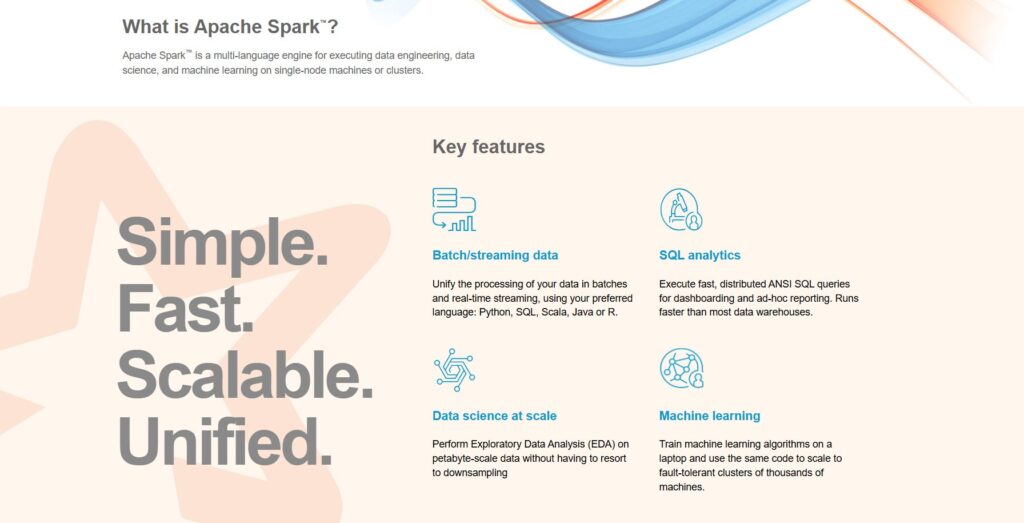
4. Manufacturing Industries
Modern Manufacturing factories use Internet of Things (IoT) sensors to track their equipment performance, monitor their supply chains, and enhance predictive maintenance. However, raw IoT data is unstructured and comes in different formats.
By using data transformation, these industries can:
- Predict machinery failures using real-time analytics.
- Optimize supply chain logistics by analyzing delivery data.
- Enhance energy efficiency by identifying high-energy-consuming processes.
For example, General Electric (GE) applies ELT with AI and ML to process sensor data from jet engines, enabling predictive maintenance that reduces downtime and operational costs.
5. Marketing Industries
Marketers rely heavily on consumer data from websites, social media, email interactions, and customer support chats. However, these data sources come in different formats and structures.
By applying these data transformation techniques, Marketers can:
- Create targeted advertising by analyzing customer behavior.
- Optimize ad spend by assessing real-time campaign performance.
- Improve engagement by segmenting audiences accurately.
For instance, Google Ads uses ETL and AI to extract and transform marketing data, which in turn helps advertisers target the right audience with data-driven insights.
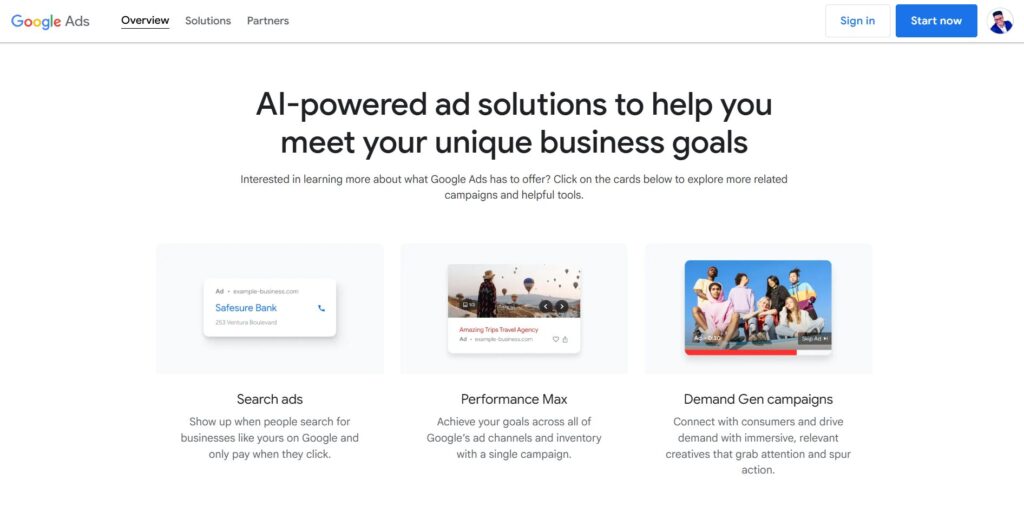
Role of AI and Machine Learning in Data Transformation
Artificial Intelligence (AI) and Machine Learning (ML) are revolutionizing data transformation by automating processes, detecting anomalies, and generating predictive insights, as well as offering:
Automated Data Cleansing
This is where these AI-powered tools detect missing values, correct inconsistencies, and standardize the formats of their data.
Real-Time Processing
This enables the analysis of streaming data, which allows businesses to make informed decisions instantly, respond promptly to changing market conditions, customer behaviors, and other time-sensitive factors, giving them a competitive edge.
Anomaly Detection
Using advanced AI algorithms, anomaly detection enables the identification of unusual patterns and outliers in data, indicating potential threats or operational inefficiencies. This includes detecting fraudulent activities, cybersecurity breaches, and more, allowing businesses to take proactive measures to prevent or mitigate these issues.
For instance, Google Cloud AI Platform and Amazon SageMaker enable businesses to apply and leverage AI-driven data transformation at scale. By automating certain manual processes, they can significantly reduce the effort required for data transformation, while also increasing accuracy and ensuring faster decision-making.
Transform Data Effortlessly with Dumpling AI
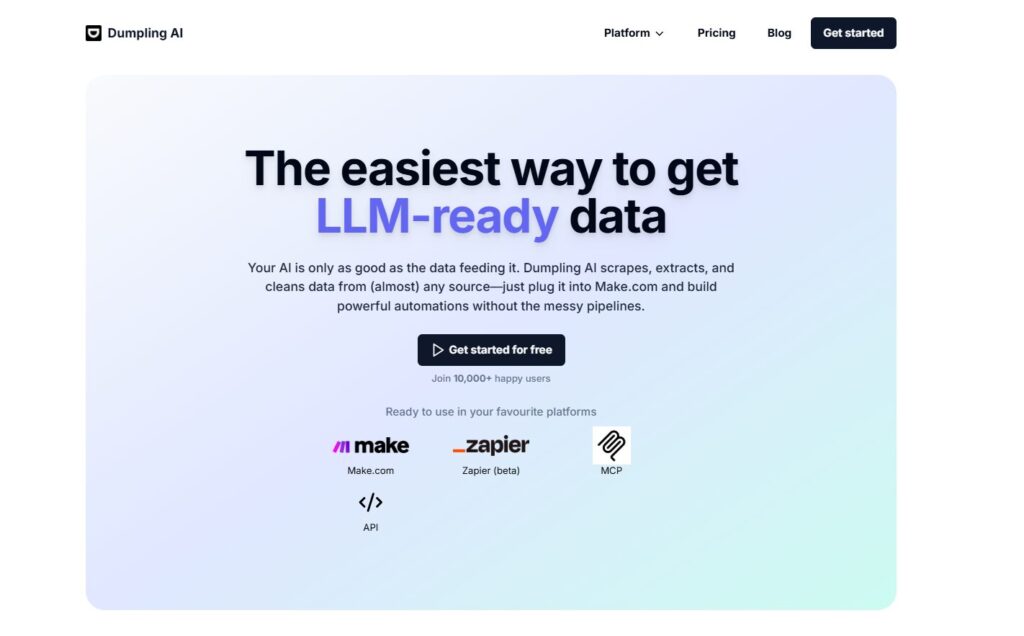
Let’s talk about how Dumpling AI makes data transformation easier before we get into real-world examples. Dumpling AI helps you turn raw data into structured consistent information that’s ready to analyze.
This works for all kinds of data, whether it comes from customer interactions IoT devices, or digital platforms. The software automates and simplifies the whole process, saving you time and effort.
Compliance, Security, and Governance in Data Transformation
With increasing data privacy regulations like GDPR, HIPAA, and CCPA, businesses must ensure secure and compliant data transformation with these key considerations:
Data Discovery and Classification
To comply with regulations like GDPR and CCPA, businesses must identify sensitive data locations and understand what qualifies as personal information.
Data Masking & Encryption
Businesses can safeguard sensitive information during data transformation by hiding sensitive details (data masking) and using data encryption, which converts the data into a secure code that requires a key to decode. This helps businesses protect sensitive information during data transformation.
Audit Trails
These logs track all changes made to data during transformation. Here’s why they’re important:
- Tracking Data Lineage: Audit trails help businesses track where their data came from, how it was transformed, and who made changes to it.
- Ensuring Accountability: Audit trails help businesses monitor data modifications and hold responsible parties accountable. This helps provide a clear record of all data transformations, ensuring transparency and accountability.
- Access Controls: By implementing access controls, organizations can ensure that transformed data is protected from unauthorized modifications, maintaining data security, integrity, and compliance. “For example, AWS Lake Formation offers built-in data security features to ensure compliance while transforming data at scale.”
Should I Choice ETL or ELT?
Let’s discuss how to choose the right data transformation approach. To make the right choice between ETL and ELT, you need to consider your business needs:
| Feature | ETL (Extract, Transform, Load) | ELT (Extract, Load, Transform) |
|---|---|---|
| Best For | Structured data, on-premise systems | Cloud-based, big data analytics |
| Processing Speed | Slower due to pre-loading transformation | Faster as transformation happens post-loading |
| Scalability | Limited scalability | Highly scalable for large datasets |
| Flexibility | Fixed schema, less adaptable | Works well with semi-structured/unstructured data |
For example, a traditional bank may prefer ETL for structured regulatory reports, while a modern fintech startup might use ELT for flexible cloud-based analytics.
Data transformation is the backbone of modern business intelligence, enabling organizations to analyze insights, optimize processes, and drive innovation. Whether through ETL or ELT, AI-powered tools, or big data platforms, transforming data effectively is crucial for competitive advantage.
Ready to transform your data the smart way?
Let’s get you started with Dumpling AI!




